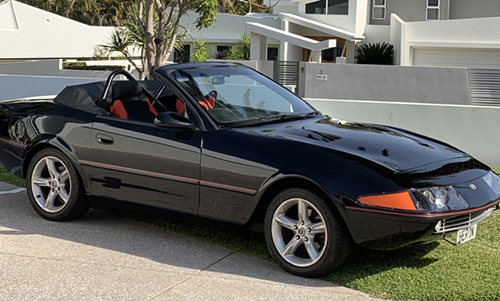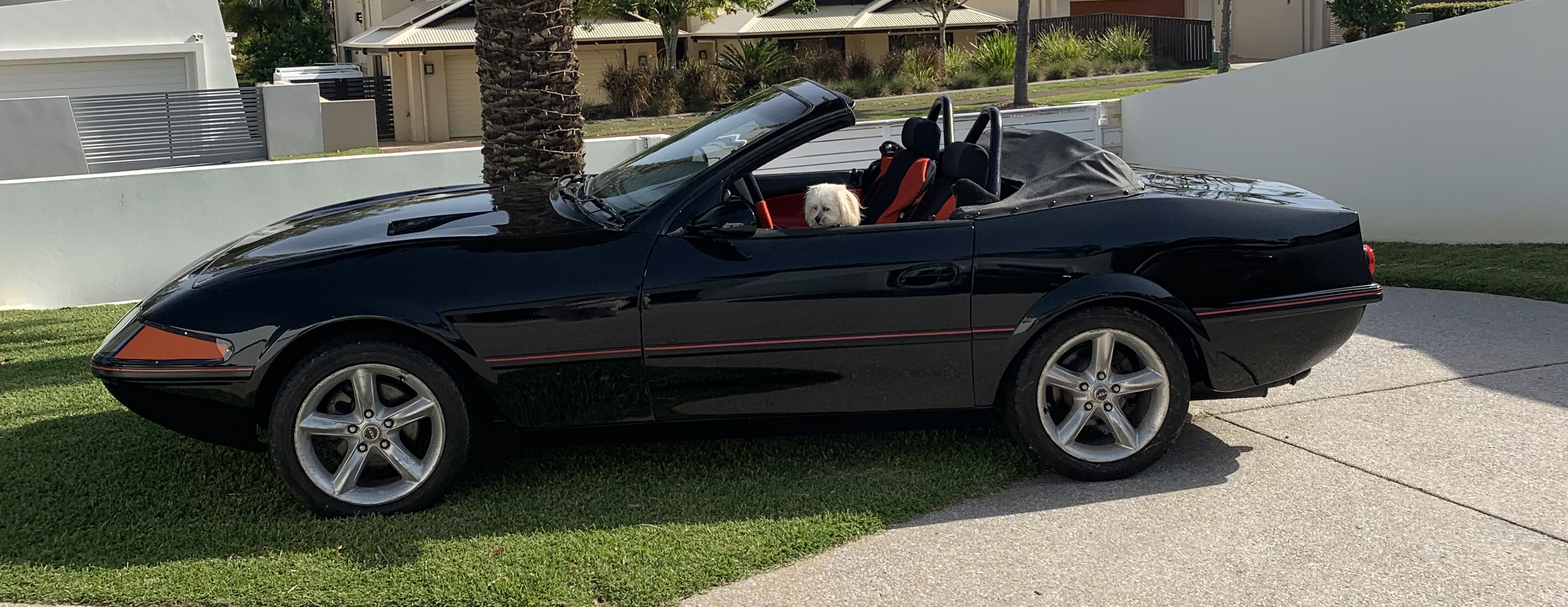Alanna - The last Heron
by Patrick Harlow

Showing how the Commodore would be cut up, rewelded and then moulded to take the new Alana fibreglass panels. |
Ross and Bev moved to Australia in 2001 to be with their daughter Marny, her husband Yasser and grandchildren, Alex and Anna. Although he was pretty busy working part time at Ultratune and being a grandfather, he still believed that he had another car in him. Ever the entrepreneur he was also thinking that there could possibly be a market for it if he was successful. In 2016 Ross started work on what will possibly be the last Heron. It had been an idea rattling around in his head for some years. The ‘Alanna’ is named after his two grandchildren, Alex and Anna, and is an amalgamation of their names, just like the car which is an amalgamation between a Ferrari and a Holden. This car was never intended to be a replica as Ross did not want men in black suits from Ferrari breathing down his neck, and threatening lawsuits. Although this car would resemble the Ferrari Daytona Spider, it would no more resemble it than his earlier Heron MJ1 resembled a Lotus Esprit. Ross chose the Ferrari Daytona as his inspiration because he believes that it is one of the most beautiful cars ever built. The donor car was going to be a Holden Commodore VT to VZ, cars that were manufactured between 1997 and 2006. Rather than being a ground-up build, Ross was going to use as much as the original Commodore as possible, including all its safety equipment and drivetrain. This was done to not only overcome the problems with today’s certification requirements but also to allow for the construction of a car that has the look and feel of a classic car but also retain the original doors including their electric windows along with all the safety features of a modern car and the reliability that people now expect. By keeping the front half of the interior, he was able to retain the airbags and collapsible steering. Along with the passenger compartment, he was able to utilise the existing suspension, braking system, computer, emission controls, heater/air conditioning etc. as they remained untouched. |
|
To obtain the correct proportions Ross needed to shorten the wheelbase (35cm) on the Holden Commodore VT sedan. This was achieved by cutting out 65cm in the rear footwell area and adding 30cm between the front suspension tower and the firewall to match the Ferrari Daytona. Not only does this shorten the wheelbase by 35cm but it also allowed the front guards to be lengthened to match the original Ferrari Daytona Spyder. While removing the roof takes away some of the Commodore’s structural strength, the shortened floor pan was reinforced with the addition of four 75 x 50 x 3 RHS chassis rails were fitted between front and rear suspension. Two through the sills and two each side of the original chassis rails. These meet at the front suspension. The front of the motor and the rollbar are mounted to these rails. This gives ample strength for the car to go through a torsion test which is one the strict requirements for certification. The most time-consuming part of the project was the making of the wooden plugs and fibreglass moulds for the body, a skill Ross has gained over many years of building fibreglass cars etc. Once the plugs and moulds were made, it was a simple process of laying up the fibreglass body panels. Next, the fibreglass panels were bolted and/or glued to the modified chassis and the wiring, brake pipes and handbrake cables were either shortened or lengthened. Now that the car is finished, Ross is content to cruise around Australia’s northern territories with the top down, just living the dream. If he were to die tomorrow with a spanner in his hand, he would die a happy man, having lived a life where his hobby became his livelihood and then his hobby again. It is doubtful that he will ever stop tinkering with cars. |


|

Ross Baker in 2019. Living in Australia and still tinkering with cars.









